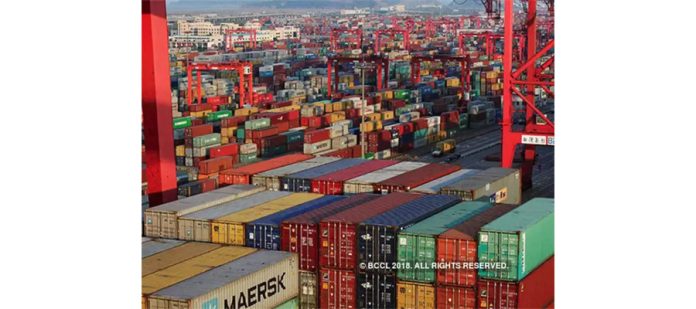India’s exports have been performing strongly, with the country achieving its highest ever merchandise exports of $447 billion in the fiscal year 2022-2023. This growth is in line with other global manufacturing hubs like Hong Kong (SAR) China, Vietnam, and Taiwan. India’s export basket has seen a shift away from traditional commodities like textiles and gems and jewelry towards engineering goods, organic and inorganic chemicals, and electronic goods. Government initiatives such as export promotion schemes and sector-specific Production Linked Incentive (PLI) schemes have played a crucial role in enabling India to become a high-value commodity exporter.
The growth in electronics exports has been particularly remarkable, with India’s smartphone exports reaching a record figure of $11 billion in FY2023. This is due to the increasing presence of global electronics manufacturers in the country. The drugs and pharmaceuticals industry has also benefited from PLI schemes, and exports surged during the pandemic due to increased global collaborations and donations of critical drugs. Additionally, a spike in oil prices led to an increase in petroleum exports, although the future value of this may be affected by easing inflation.
Several factors are driving the surge in India’s exports. Firstly, there has been a strengthening of manufacturing capabilities since the launch of the ‘Make in India’ movement in 2014. Annual foreign direct investment (FDI) growth has doubled during this period, leading to improvements in the manufacturing sector. Various PLI schemes across sectors have empowered domestic manufacturers to become globally competitive. The government has also focused on improving logistics, resulting in significant improvements in India’s rankings in the World Bank’s Logistics Performance Index.
Trade regulations have played a crucial role in boosting exports. The introduction of WTO-compatible schemes such as Remission of Duties and Taxes on Export Products (RoDTEP) and Rebate of State and Central Taxes and Levies (RoSCTL) has been beneficial for exporters. The government has expanded the list of items applicable under the RoDTEP scheme to further boost exports. Other initiatives like Market Access Initiative, Districts as Export Hubs, and Champion Service Sectors scheme are also accelerating overall trade.
The changing global landscape, with the “China plus one” strategy gaining traction among developed economies, has provided opportunities for Indian exports. The country is experiencing growing demand from new markets such as the Netherlands, Brazil, and Saudi Arabia. India has also been proactive in signing Free Trade Agreements (FTAs) with strategically significant countries to boost economic activities.
To achieve the target of $1 trillion in merchandise exports by 2030, India can draw strategic lessons from Southeast Asian countries. These countries have capitalized on the global trading opportunity through low labor costs, reduced tariffs, and a focus on high-value products. India needs to prioritize the development of research and development (R&D) to increase the export of high-technology products.
Regulatory reforms are crucial for improving India’s export patterns. The new Foreign Trade Policy (FTP) will provide a necessary boost, with features such as internationalization of the Indian rupee and digital transformation. India also plans to establish a single trade body to facilitate efficiency and accountability in trade. Correcting input tariffs to maintain a stable cost structure should also be considered.
Reforms and policy initiatives have been addressing manufacturing challenges and boosting exports. However, there is a need to address complexities in the disbursement of funds under the PLI schemes to ensure efficient implementation. Skilling the vast youth population through initiatives like the Skill India Mission will also enhance India’s labor advantage.
By focusing on catalyzing domestic manufacturing and addressing structural economic challenges, India can achieve the target of $1 trillion in merchandise exports by 2030. The government’s continued efforts, along with strategic reforms and policies, will pave the way for India to become a prominent player in the global








